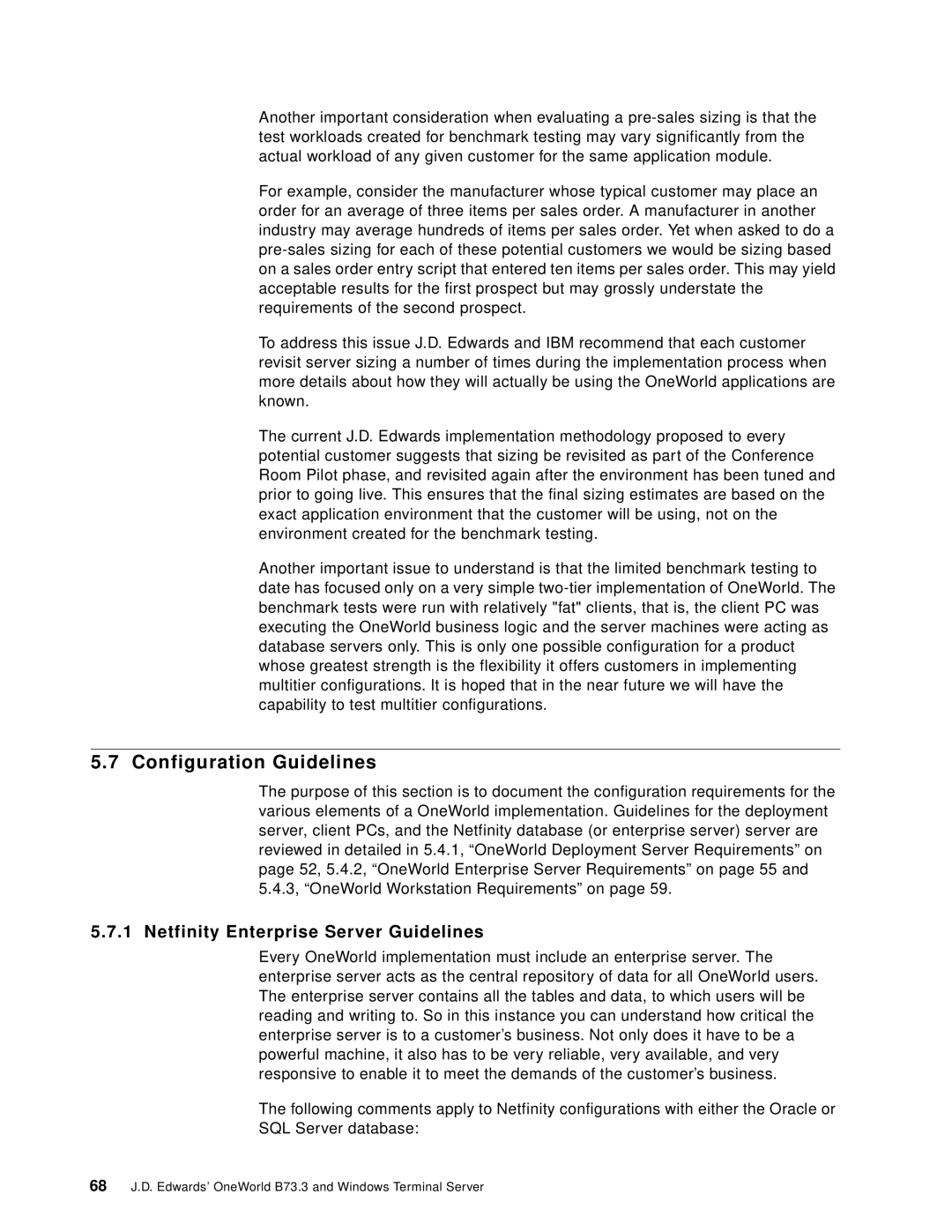Another important consideration when evaluating a
For example, consider the manufacturer whose typical customer may place an order for an average of three items per sales order. A manufacturer in another industry may average hundreds of items per sales order. Yet when asked to do a
To address this issue J.D. Edwards and IBM recommend that each customer revisit server sizing a number of times during the implementation process when more details about how they will actually be using the OneWorld applications are known.
The current J.D. Edwards implementation methodology proposed to every potential customer suggests that sizing be revisited as part of the Conference Room Pilot phase, and revisited again after the environment has been tuned and prior to going live. This ensures that the final sizing estimates are based on the exact application environment that the customer will be using, not on the environment created for the benchmark testing.
Another important issue to understand is that the limited benchmark testing to date has focused only on a very simple
5.7 Configuration Guidelines
The purpose of this section is to document the configuration requirements for the various elements of a OneWorld implementation. Guidelines for the deployment server, client PCs, and the Netfinity database (or enterprise server) server are reviewed in detailed in 5.4.1, “OneWorld Deployment Server Requirements” on page 52, 5.4.2, “OneWorld Enterprise Server Requirements” on page 55 and 5.4.3, “OneWorld Workstation Requirements” on page 59.
5.7.1 Netfinity Enterprise Server Guidelines
Every OneWorld implementation must include an enterprise server. The enterprise server acts as the central repository of data for all OneWorld users. The enterprise server contains all the tables and data, to which users will be reading and writing to. So in this instance you can understand how critical the enterprise server is to a customer’s business. Not only does it have to be a powerful machine, it also has to be very reliable, very available, and very responsive to enable it to meet the demands of the customer’s business.
The following comments apply to Netfinity configurations with either the Oracle or SQL Server database:
68J.D. Edwards’ OneWorld B73.3 and Windows Terminal Server
